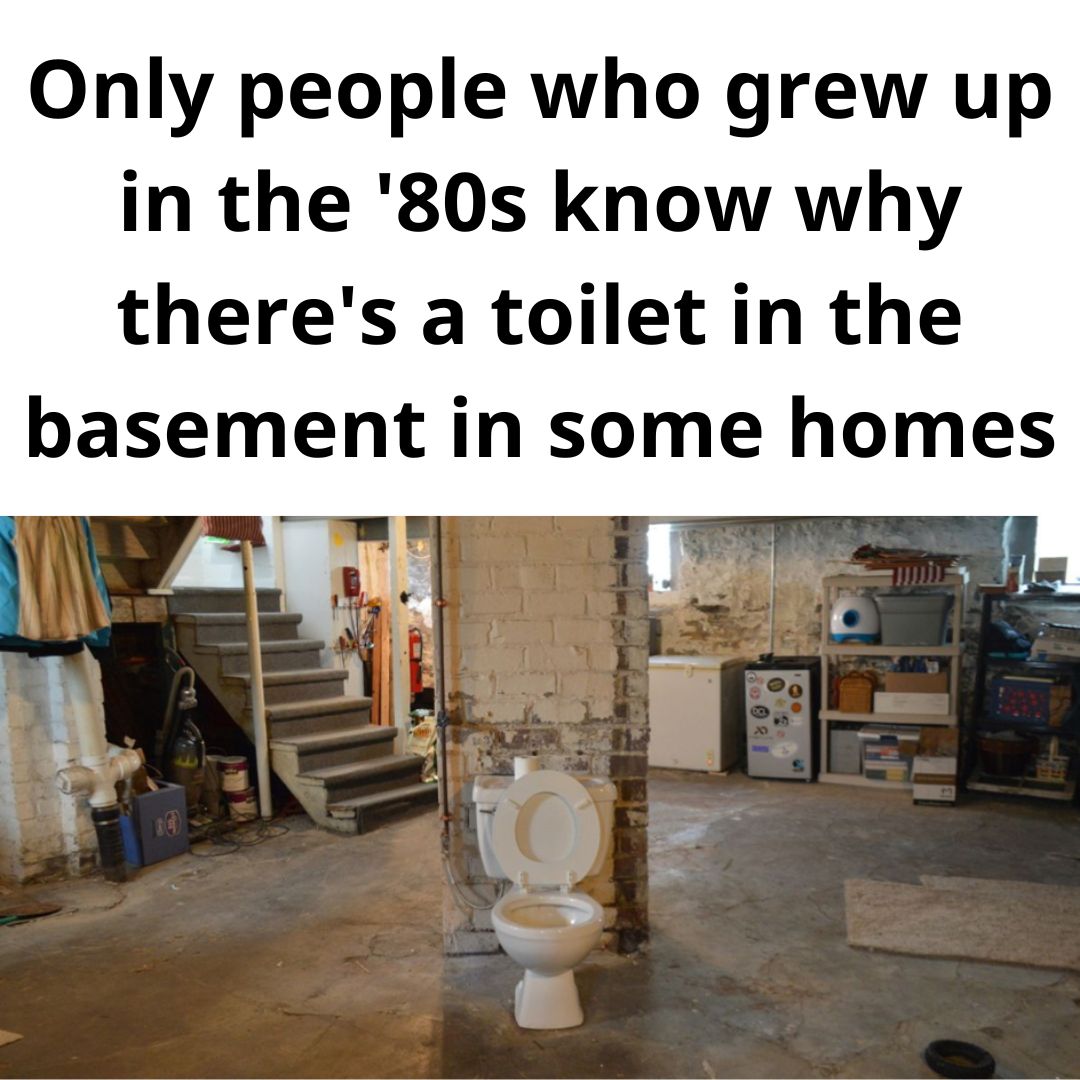Growing up in a house that was more than a century old, I became used to some of the quirks that come with older homes—creaky stairs, uneven floors, and a basement that felt more like a cave than a livable space. One particular oddity that always stood out to me, though, was the presence of a lone toilet sitting in the corner of our dark, damp, and very unfinished basement. It didn’t have walls around it, no sink nearby, and certainly wasn’t part of a functional bathroom.

It was just… there. As a kid, I never thought much of it. We didn’t use it, and it honestly just blended into the background of what we considered a storage space. But years later, as an adult diving into the world of home renovation and restoration, that strange basement toilet resurfaced in my memory. I began to notice them in other old homes too—friends’ houses, listings on real estate websites, even homes I was working on—and I realized this seemingly random toilet wasn’t unique at all.
As it turns out, these basement toilets are more common than people think, and there’s actually a fascinating reason behind their existence. These toilets are often referred to as “Pittsburgh potties,” a name that originates from the steel city where the concept is believed to have started. In many homes built during the early 20th century in Pittsburgh, workers—especially steelworkers—would come home filthy after long days at the mill. Rather than tracking dirt and grime through the main parts of the house, these workers would enter through an exterior basement door, use the toilet in the basement, clean up, and change out of their work clothes before coming upstairs. It was a practical and hygienic solution that separated the dirty from the clean and helped preserve the condition of the upper floors.
However, the presence of basement toilets isn’t limited to Pittsburgh or even to industrial cities. Across North America, many homes built before World War II featured these seemingly random basement toilets, and for another very functional reason. Back then, municipal sewer systems weren’t as developed or reliable as they are today. According to the Calgary Real Estate Board, during this time, cities were growing quickly, but infrastructure wasn’t always able to keep up with the rapid expansion. Sewer backups were not uncommon, and when they happened, the wastewater would rise through the lowest fixtures in the home. That’s where the basement toilet came into play. Positioned right above the point where the sewer line entered the home from the street, the basement toilet essentially acted as a pressure release valve. If a backup occurred, it would usually spill out from this lowest point, preventing the mess from reaching the more commonly used bathrooms on the first or second floors.
While cleaning up a backed-up toilet in a basement wasn’t exactly pleasant, it was a lot easier and less disruptive than dealing with sewage in a finished bathroom or kitchen. Most basement floors were concrete or stone, making cleanup relatively manageable, and since basements at the time were typically used for storage, the damage was minimal. So while it might look odd or even creepy to see a lone toilet sitting out in the open in a basement, it actually represents some clever thinking and practical design from a different era. Today, most of these “Pittsburgh potties” have been out of commission for decades. Some have been removed entirely during renovations, while others remain in place—unused, but still a curious reminder of the home’s history. If you ever come across one during a home tour, or perhaps even in your own basement, you’ll now know that it isn’t just a weird quirk. That basement toilet once served a very real purpose, whether it was helping hardworking laborers clean up before seeing their families or acting as an early version of plumbing insurance in the days of less dependable infrastructure. It’s one of those little pieces of the past that tells a bigger story about how people used to live and how homes were built to serve their unique needs. So the next time you stumble upon a toilet sitting alone in the basement, just remember—it’s not random at all. It’s a clever, historical fixture from a time when practicality came first, and every part of a house served a purpose.





